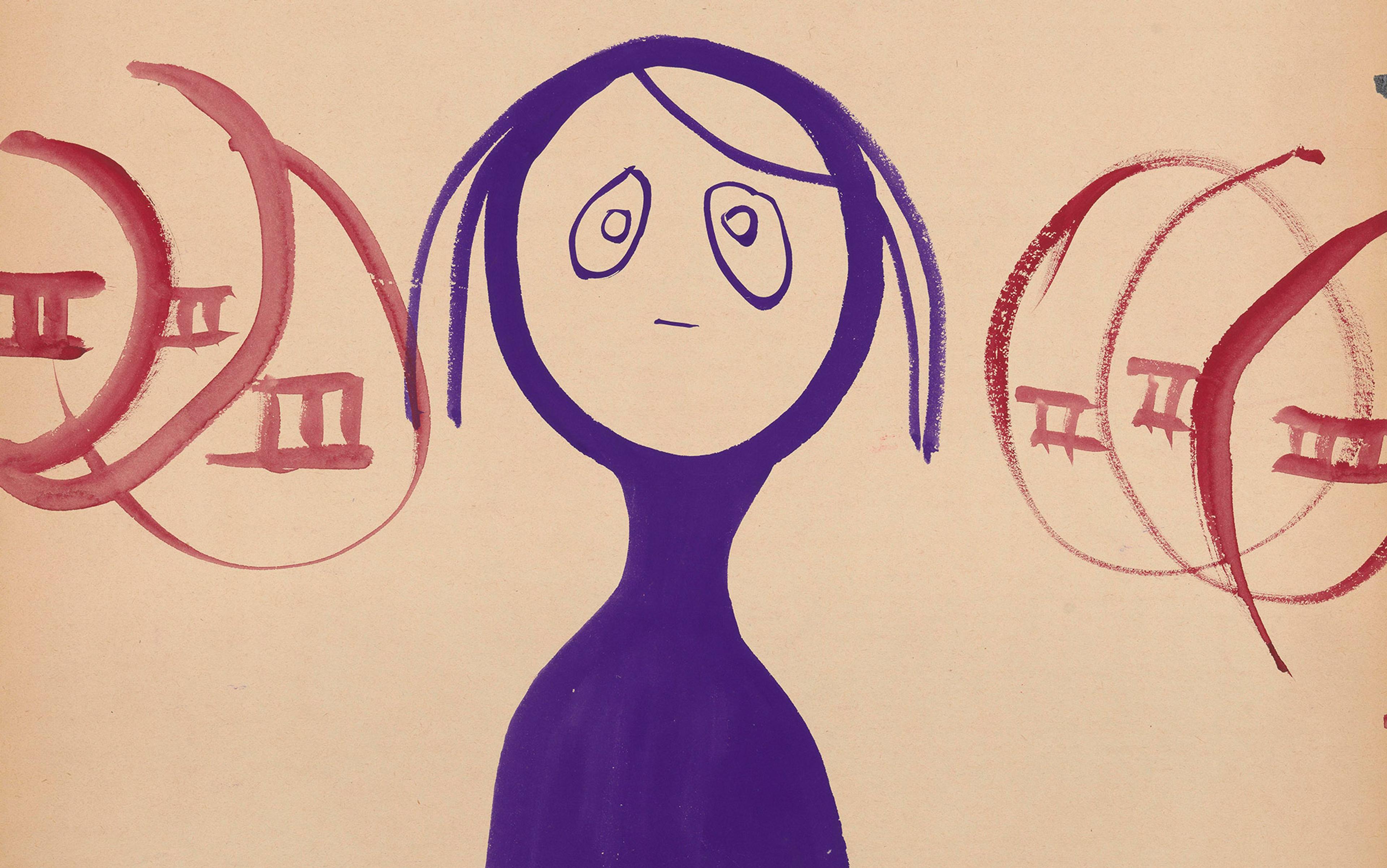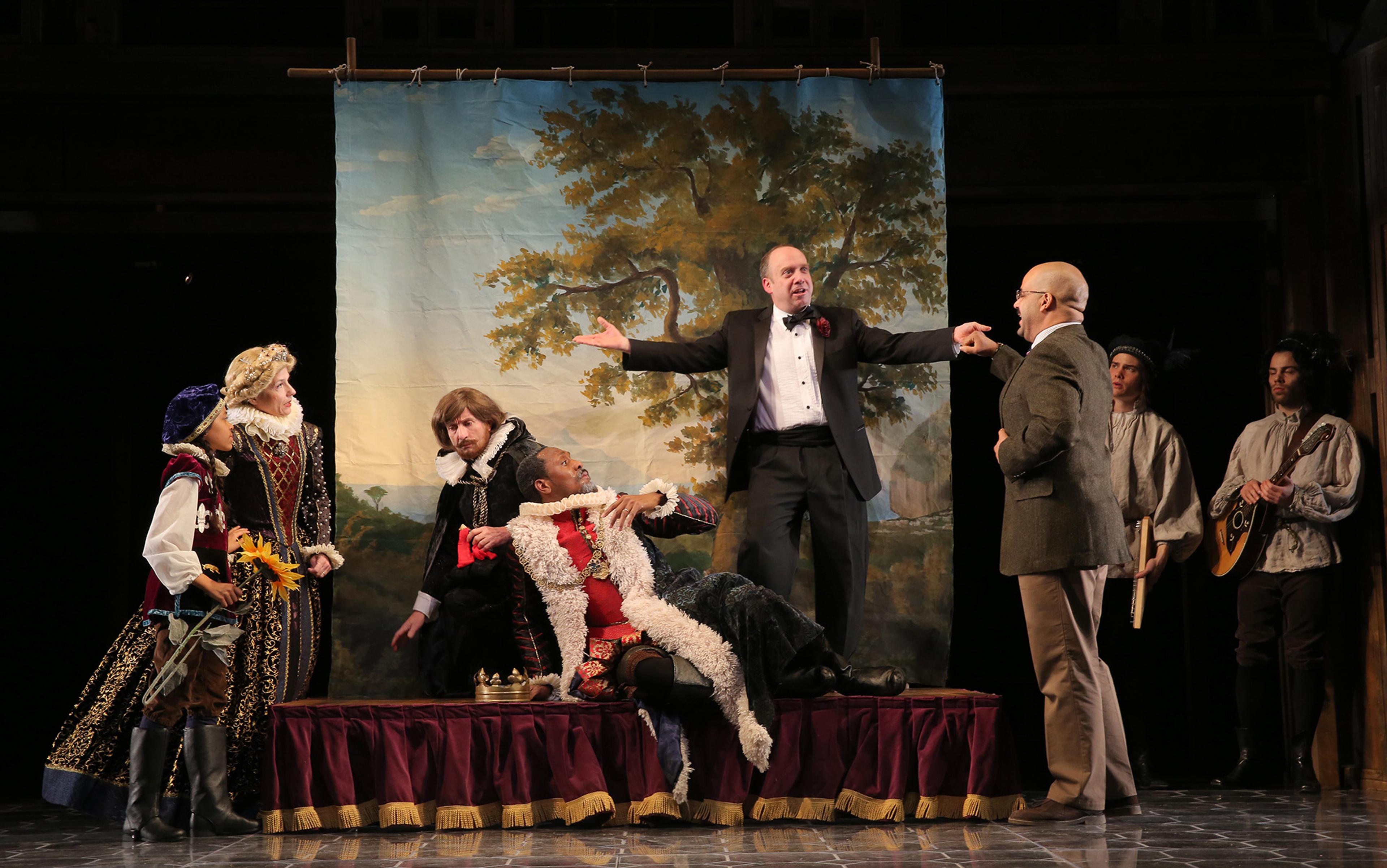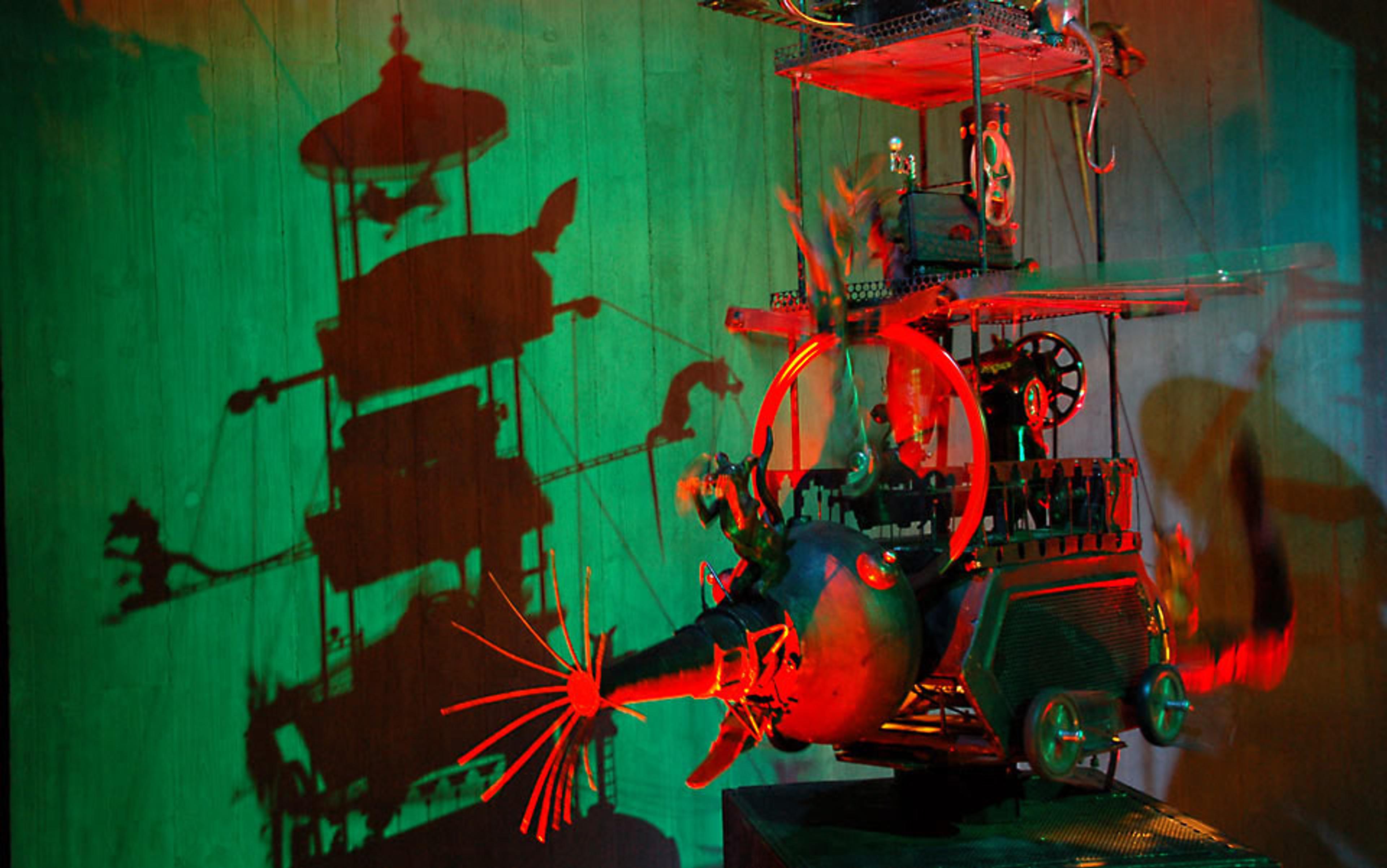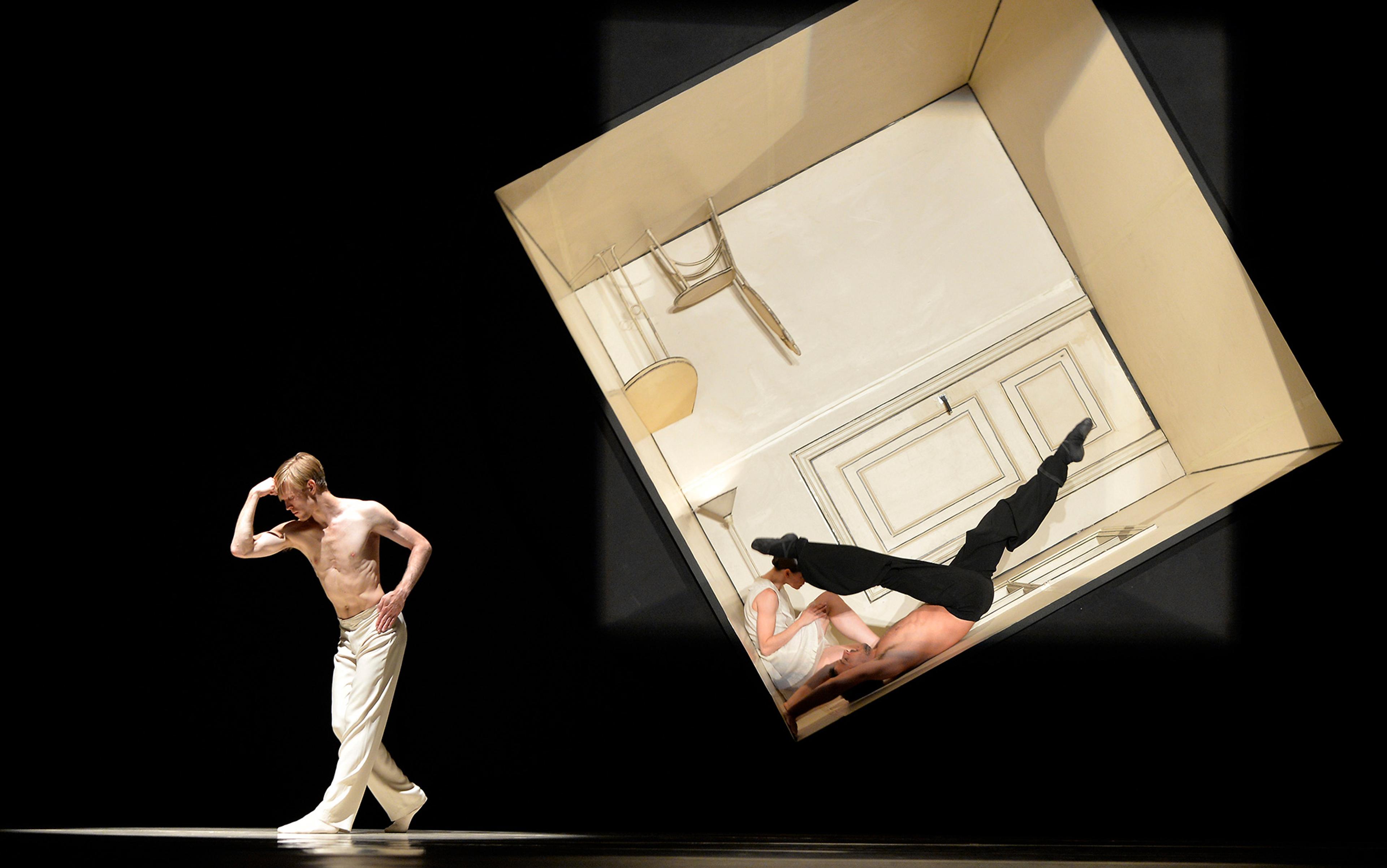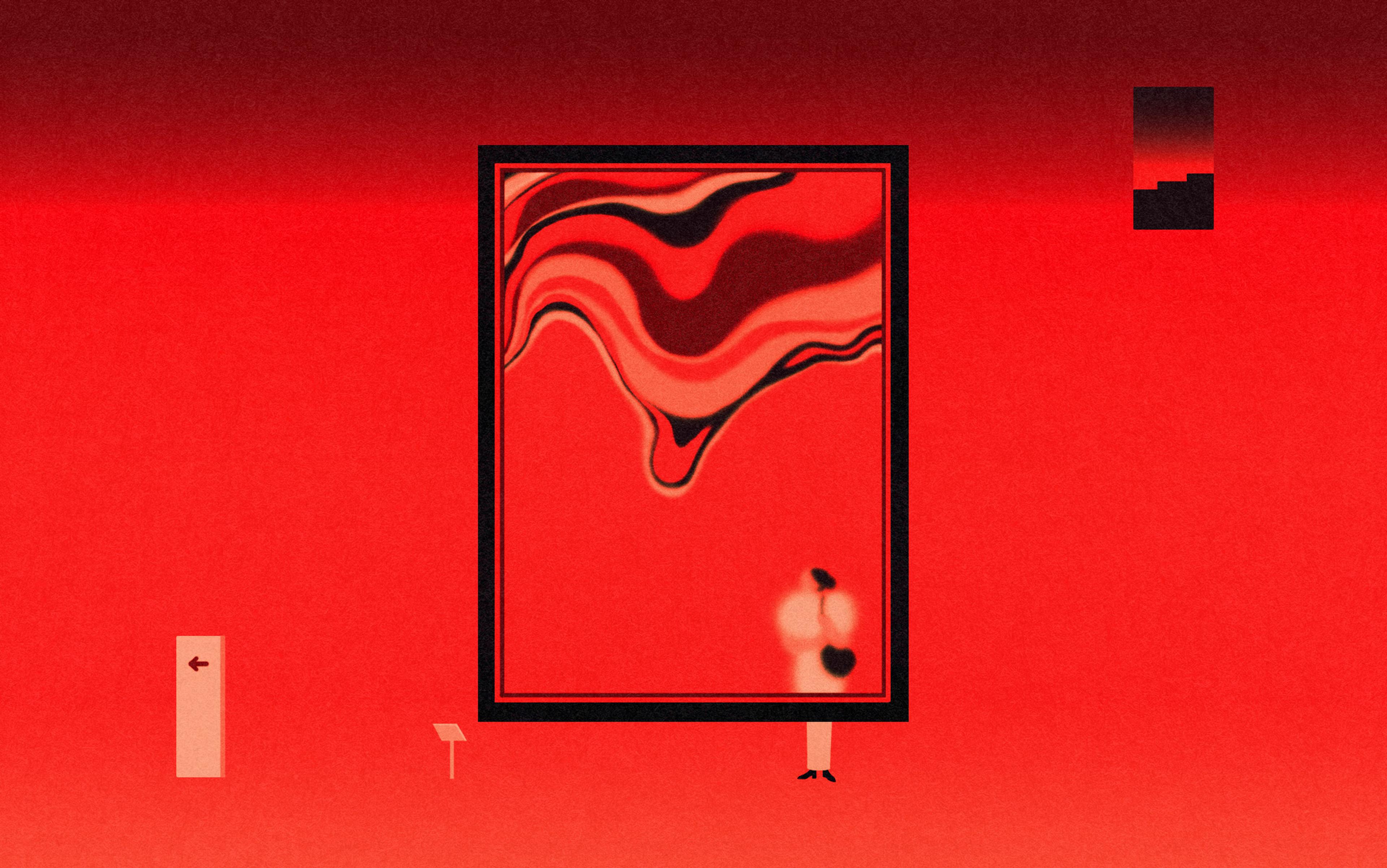‘Take a pen. Place it on the paper. Draw wherever you want. However you want. You know, Paul Klee said: “Drawing is like taking a line for a walk.”’ In the hospital workshop, I turn towards a patient, smile and continue: ‘So, let’s draw together. We could draw houses, and draw a path between our homes. Let’s grab paints. Turn the paper around. Upside down. If you don’t mind, I can paint your sky and you can paint mine… We can play and make…’
For more than 20 years, I’ve been saying these sentences, playing and making, as a clinical arts therapist, specialising in mental health, and as a lecturer and consultant using creative techniques with doctors, hospital directors, nursing managers and entrepreneurs. Guided by artists such as Louise Bourgeois and Jackson Pollock, and by Plato, I spend my days tapping into what the phenomenologist and philosopher of play Eugen Fink calls the ‘peach skin of things’. It glows.
The philosopher Friedrich Nietzsche once described play as ‘[b]ecoming and dissolution, building and destruction without moral implication, in eternal innocence’ – as an act to be found ‘in the world only in the play of the artist and child’. When I ask my six-year-old Jeanne what happens when we play, she says: ‘If all the children in the world play at the same time, it grows. It grows and grows.’ Playing is like a dream, for, as the poet Paul Valéry wrote in 1914, in dreams ‘we have a combination of EVERY POSSIBLE MEANS of diverse impressions’. Play is an opening of multitudes.
Yet, paradoxically, for all its emphasis on multitudes and freedom, play involves strict rules, making it a skill that can be honed. Various play specialists, such as Fink and the social scientist Roger Caillois, have attempted to define the necessary criteria to reach the state of play, one that Fink describes as bringing light, or ‘day-ing’ the world. According to another play expert, the psychiatrist Stuart Brown, our need to play stems from our biological neoteny: we are the only mammals with an 18-year-old childhood. For Brown, play possesses certain key attributes: it is purposeless, voluntary and inherently attractive, while offering freedom from time, diminished consciousness of self, improvisational potential and continuous desire. When we play, we exist outside of time, and don’t want to stop.
Inspired by the improvisation practitioners Peter Slade, Miranda Tufnell and Keith Johnstone, I play the game ‘We are…’ with an adult therapy group, and we take turns proposing and acting scenes. Everything is spontaneous. ‘We are climbing mountains in slow motion.’ ‘We’re losing every single computer game.’ ‘We are eating a piping hot baguette.’ After an hour, a patient says, astonished: ‘I didn’t see the time pass.’ Last week, a hospital manager told me at a seminar’s end: ‘Time flew today.’ As we play, we experience a positive form of St Augustinian time – not the objective temporality of the planets turning, but an alteration of our subjective perception. We exist outside of clock time.
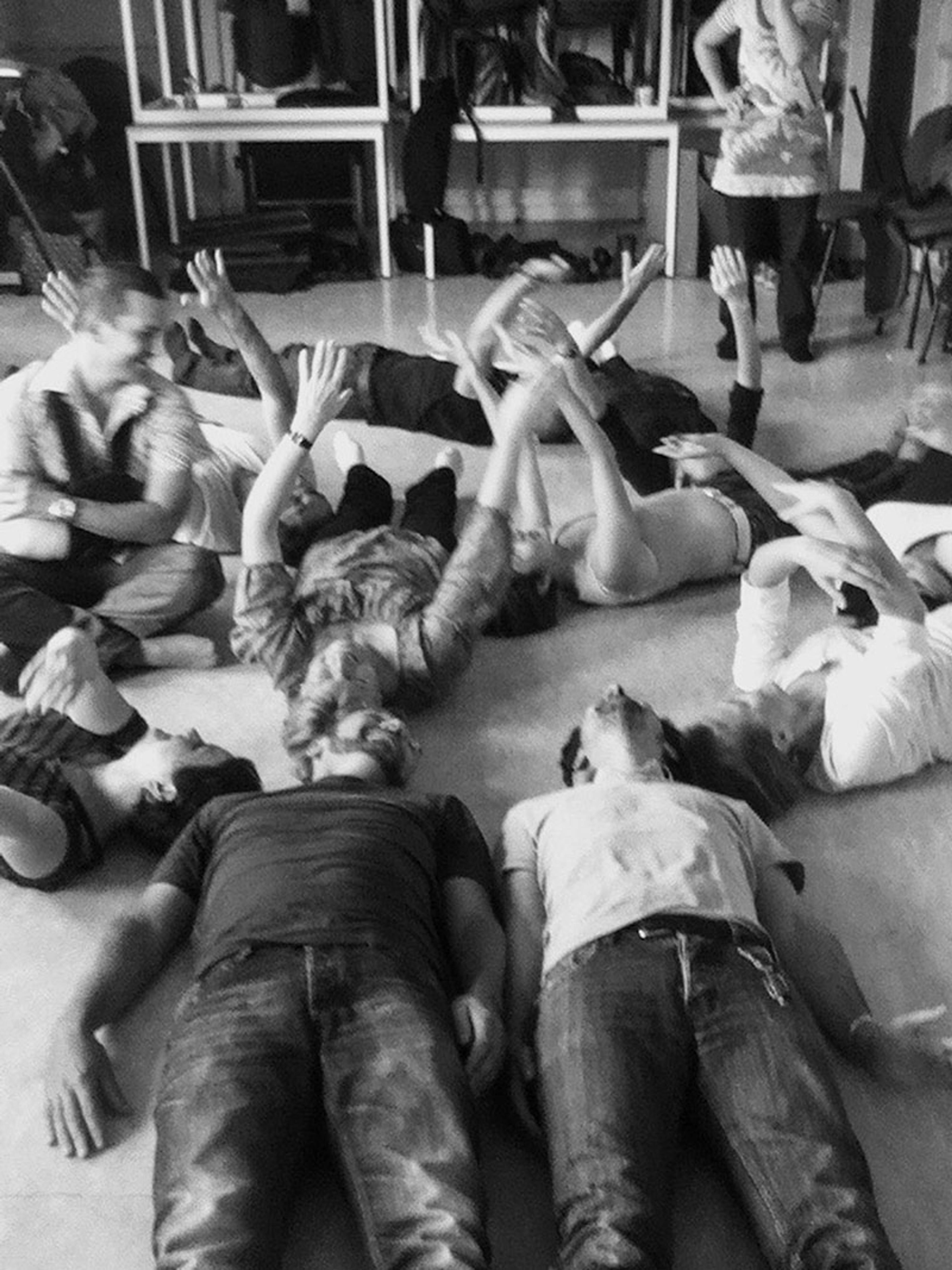
Photo supplied by the author.
When my daughters are five or six, I observe them playing their first ‘as if’ games. Rose says: ‘I am making a train.’ For hours, she puts chairs in lines, for ‘passengers and drivers’. When everything is ready, she announces – to my surprise – ‘It’s finished. Can I have a snack?’ The game is the process, not the finished product. Importantly, when we play and make art, the products we make, the things we do are autotelic – they are their own end in themselves; as Hannah Arendt wrote: ‘only where we are confronted with things which exist independently of all utilitarian and functional references … do we speak of works of art.’ In this way, play could be considered as an anti-capitalistic activity.
Writing with reference to the philosopher Martin Heidegger, Fink said that it’s ‘because we are open to the world’ (which is ‘an openness of Dasein to the world’) that we can play at all. Heidegger’s notion of Dasein, a peculiarly human quality of being-in-the-world, is not unlike that experience defined by the positive psychologist Mihaly Csikszentmihalyi as a flow state, or in the zone. In flow, consciousness of time and self disappear. We feel fulfilled, and seek to repeat the experience. Extrapolated into a clinical context, experiencing flow during sessions means that patients return and engage over time, delving deeper into the therapeutic process.
Suddenly, our lines turn together, aligned like a skein of geese in flight
The same goes for education and work. Play is a powerful motor. Recently a poet told me that having studied literature at Oxford she lost the desire to write, due to a tyrannical professor. It was only later, when involved in printing, and while carving a Sappho fragment in Greek boustrophedon into lino, that her vital pleasure for words re-emerged. The antonym of ‘flow’ is a state of ‘fight or flight’.
One day, a new patient tells me: ‘I can’t draw.’ In a daycare centre, the client and I face a blank page. The intimate piano notes of ‘Falling, Catching’ (2010) by Agnes Obel fill the workshop space. Music dawdles around paint pots, darts between trashcan sculptures and prints of Camille Claudel’s sanguine sketches. The woman repeats: ‘I can’t draw. I should never have stopped work.’ She shakes her head and repeats: ‘I should never have stopped work.’ Her case psychiatrist describes this as her litany. She is severely depressed. I say: ‘I think everyone can draw.’ Placing the nib of my pen on the white sheet, I draw a squiggle. The woman stops talking and draws a line. Suddenly, our lines turn together, aligned like a skein of geese in flight. As the piano music plays, we fill the white rectangle with black furrows, bisecting, greeting, avoiding, and running parallel on the page.
Ten minutes later, we examine our work. She says: ‘But it doesn’t look like anything.’ I say: ‘Imagination is as important as facts. When we draw, we start from a unique place, a Locus Solus.’ She whispers: ‘I should never have stopped work.’ Her voice falls into the room like a petition, a prayer. I ask her: ‘What would you like to draw?’ She says: ‘A golf course. I used to mow the greens.’ I nod: ‘Wonderful idea.’
On a new sheet of paper, we map out the course. Smiling for the first time, she identifies the teeing area, rough and greens. For 40 minutes, we draw blades of grass. Over the following weeks, we draw hundreds and thousands of emerald stems, and she smiles: line after line after line. I am reminded of something Gaston Bachelard writes in The Poetics of Space (1958): ‘When the image is new, the world is new.’ When we play, we create, rise, emerge. Patients step outside their DSM-defined psychopathology, often experiencing a sense of a dawning. Their world is expanded, unexpectedly. Doors open.
Many thinkers and philosophers who write about play seem to ignore that a leap in the dark requires trust. One must feel secure to play. Without confidence, there is no flow, no dawning. Before practical sessions begin with adult or adolescent groups, we write charters on paperboards and invent our play conditions. We debate various ideas: the use of mobile phones; being on time; respect; participation; confidentiality. When we play with adults, there is a great and justified fear of being infantilised, laughed at, and somehow deceived. For group play to function, everyone must feel safe to play.
The paediatrician and psychoanalyst Donald Winnicott, who underlines the importance of this safety, identifies play as happening in the ‘transitional space’ between the imagined and the real. In ‘as if’ play, a child knows that the banana is not a phone, but this doesn’t stop the child from answering a call. For Winnicott, play in this space allows children to shape their place in the outside world. Moving to and fro, they test reality. Yet this testing – as infants throw toys, experiment with symbolic risk and failure – requires parental presence. The parent allows the play to be experienced without compliance or anxiety. In consequence, Winnicott suggested that, if we play safely with danger as young children, as adults we cope better with rejection and loss, and we’ll take more healthy risks.
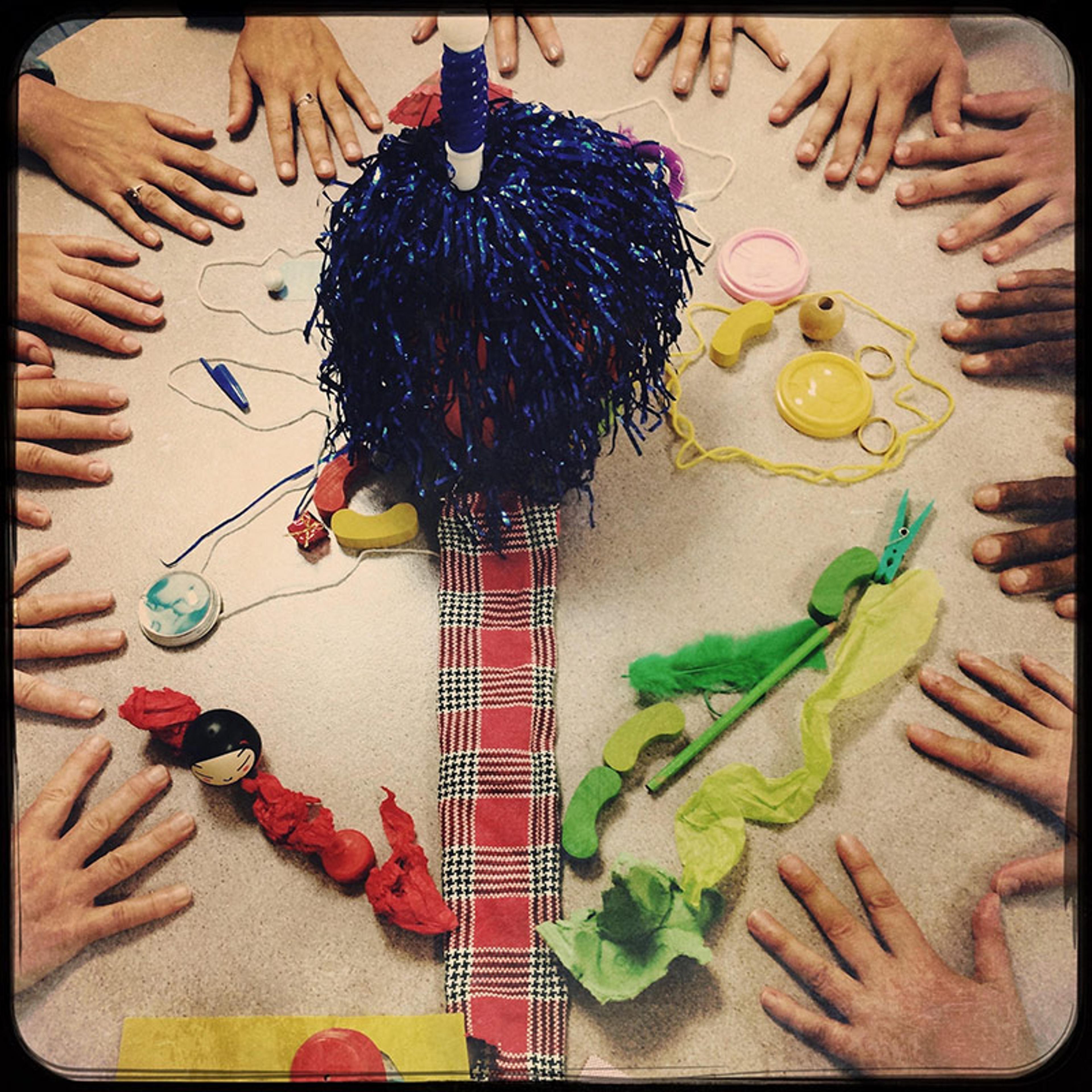
Photo supplied by the author
Play, as Fink writes, unites ‘the highest desire and the deepest suffering’. For years, I worked with teenagers diagnosed with psychosis. A highlight of our work was a short surrealist play, ‘The Lost Potato Masher’, which they devised based around kitchen objects. The main roles were taken by a fridge, a cupboard, a toaster, a cooker, a table and chairs, and the lost potato masher. The text dealt with parental abandonment, despair, solitude, violence, fate and hope. In a training context, a hospital manager, in an improvisation, once acted the role of the file of a dead patient that had been thrown into a bin. Both of these examples show the cathartic effect of play, allowing us to sit with our shadows.
Most of my drama-therapy sessions, and even when I use fine arts, begin with a warm-up, a sensorial preparation. We breathe, stretch and yawn. The pioneering drama-therapist Peter Slade underlined the importance of such physicality, the tangible action in play, in leaping and jumping. ‘Let your body do the thinking,’ I suggest to patients as we take turns imagining a free movement sequence, twirling arms and jumping, or designing water sculptures for miniature Japanese gardens. In play, the body can become the foundational source of meaning.
At all stages of life, Lego-making, knitting, embroidery and painting can contribute to psychological wellbeing
Across the globe, many of the etymological roots of the word ‘play’ locate it in the visceral: ludere in Latin refers to leaping fishes and fluttering birds. The Anglo-Saxon lâcan means to move like a ship on the waves, or to tremble like a flame. The Sanskrit kridati also, as in Germanic languages, describes the movement of wind. In play, we are rarely immobile. We’re alive.
A recent study by the psychologists Maja Stanko-Kaczmarek and Lukasz Kaczmarek at the Adam Mickiewicz University in Poland found that the tactile sensations of finger-painting provoked a state of mindfulness connected with wellbeing. As we paint, we’re present in the moment, and we have a broader attention. This can be contrasted with the ‘mindlessness’ state, often a symptom of mental illness, characterised by past or future ruminations. The physical nature of play and making locates us in the here and now: it centres us in ourselves, mobilising an embodied cognition that’s important in skill learning. At all stages of life, Lego-making, knitting, embroidery and painting can contribute to psychological wellbeing.
At the end of our sessions, I often ask patients to identify their physical as well as mental and emotional feelings. Hugo Critchley, an expert on mind-body interaction, and co-director of the Sackler Centre for Consciousness Science at the University of Sussex in England, has researched the direct correlation between interoception (the ability to read sensation within one’s own body) and emotional intelligence. Play can be a shared, embodied activity. Playing collectively, we consciously transcend together.
This ‘sharedness’ of play was highlighted by the Dutch historian Johan Huizinga. In Homo Ludens: A Study of the Play-Element in Culture (1938), Huizinga recognised that when we play we enter a ‘play-community’. We mutually withdraw and reject norms. Inside the circle of a game, ordinary life laws and customs no longer apply. Play space and time are always limited: the stage, the playground, the screen, the sheet of paper, the workshop or the magic circle. So, when we use drama-therapy with patients with schizophrenia, for example, both the group and the space act as containers, allowing the person to use their imagination in a way that doesn’t involve hallucinations.
Many years ago, I worked with an American man with schizophrenia, who frequently hallucinated that someone was about to cut off his head. Every day, in the hospital corridors, he would whisper urgently: ‘They are coming to get me.’ Yet, post-warmup, in the drama-therapy room, he rarely hallucinated. For months, he performed the role of a duke in a play we devised based on As You Like It (without once thinking he was in fact an aristocrat). The ‘as-if play’ of theatre requires a collective experience, unlike the schizophrenic hallucination that’s unique. The safety of the group also generates trust, holding the new reality, allowing us to climb imaginary mountains, cross the Seven Seas.
One day, a case psychiatrist prescribed art-therapy for a young Spanish man who’d had a breakdown after months working in a fish-processing factory, and who now had eating disorders. During our first sessions, I proposed a spontaneous Dadaist collage exercise, in which he intuitively selected images and words from a collection spread out on the table. No right and wrong answers. He gathered images of flowers, a young man washing his hair. From the cut-out words, he composed a beautiful, bare text about finding water, life. For months, we worked on these themes, exploring 18th-century portraiture and self-portraits, and we concluded by fabricating an artist’s book. In this process, the early work was the key – a seemingly random selection based on subconscious choice. This spontaneous element is a priming substance on the canvas of play, a core foundation of the house. But how to induce spontaneity?
During a creativity seminar, I talk about the ‘watchers’ at the gate of the mind that the philosopher Friedrich Schiller wrote about to his jurist friend Christian Gottfried Körner – those sentinels of reason whose job is to check unruly creativity. ‘Imagine the watchers are on your shoulders,’ I say to a room filled with entrepreneurs. ‘These are your guards. You want to develop new ideas and solve problems. Your ideas, solutions arrive at the gate and – before they’ve been given a chance – your guards filter, disregard, censor your ideas as bad, stupid, ridiculous. Most of your ideas are never allowed past.’ The group laughs, and I continue: ‘When we work creatively, we remove the guards. Let the ideas flow.’ In The Interpretation of Dreams (1889), Sigmund Freud, encouraging the expression of ‘freely rising’ ideas, quotes Schiller:
it is harmful for the creative work of the mind, if the intelligence inspects too closely the ideas already pouring in, as it were, at the gates. Regarded by itself, an idea may be very trifling and very adventurous, but … perhaps in a certain connection with others, which may seem equally absurd, it is capable of forming a very useful construction.
In a seminar with a group of French social workers, we throw paint on a canvas Jackson Pollock-style. The workshop takes place in a manor house. I’ve taped tarpaulins all over the walls and floors. The workshop is about ‘lâcher prise’ – letting go – in decision-making, stress management, emotional intelligence – and using creativity as a tool. With paintbrushes, we take turns dripping and splattering streaks of magenta, blue, orange, yellow and purple paint. This method encourages us to advance without fear of failure, with the ‘growth mindset’ coined by the human motivation psychologist Carol Dweck. We seek to explore and evolve, like Pollock, who said:
When I am in my painting, I’m not aware of what I’m doing. It is only after a sort of ‘get acquainted’ period that I see what I have been about … the painting has a life of its own.
The vital role of play, chance and instinct in creativity has been acknowledged by many early 20th-century artistic movements, including Dadaism and surrealism, and can been seen in jazz, and in later movements, such as punk. Punk, as the American artist Judy Nylon acknowledges, was DIY, shape-shifting, and about having the ‘widest possible wingspan’. However, play has illuminated much of human history, too, from Nicholas of Cusa’s use of the ballgame metaphor for theological ruminations in De ludo globi (1463), to the development of the commedia dell’arte. Plato insisted that ‘Life must be lived as play … and then a man will be able to propitiate the gods, and defend himself against his enemies, and win in the contest.’
To play is to experiment, to discover, to recover pleasure, to uncover the secret, do the possible, the impossible, to invent and make the thing that is unmakeable, to cross the bridge you couldn’t cross, light wet fire, walk on water, fly. It is for an agoraphobic to sing in front of a crowd, dance, laugh and cry, paint a picture, forget worries, pain and death, live outside of time, be in the flow, connect, disconnect, reconnect, imagine, make.
It is a summer afternoon in a children’s psychiatric unit in France. A 13-year-old girl looks me up and down, says: ‘Next month, I can’t come to the group. I am going to see Won Deerection.’ I say: ‘Who are Won Deerection?’ The group of teenagers giggles. The girl, who was adopted from Rwanda, and has witnessed scenes of war, rape and violence, articulates each letter. ‘W-o-n D-e-e-r-e-c-t-i-o-n is a boys’ band.’ ‘Oh, One Direction,’ I say. Everyone laughs at my British accent. ‘What’s your favourite One Direction song?’ I ask. She raises her eyebrows: ‘You wouldn’t like it.’ I say: ‘You never know, I might love it. Why don’t you bring a CD next week?’ She shrugs her shoulders. The five teenagers say goodbye. One of them is mute, one self-harms, another can’t enter the room without weeping. Later, the psychiatric nurse and I take notes, discuss anamnesis, phobias, relaxation, anorexia, imagination, psychotic symptoms and laughter.
The next session, the girl brings the One Direction CD, and we listen to her favourite song, ‘What Makes You Beautiful’ (2011). In the subsequent session, I propose the following: ‘We’re going to imagine we’re at the One Direction concert. The band walks on to the stage. Lights flash. We call out their names.’ At the top of our voices, we scream ‘Niall, Zayn, Liam, Harry, Louis!’ and collapse into giggles. Over successive weeks, the teenagers develop stories about a Greek package holiday, riding invisible donkeys, getting sunburnt, and swimming together in the sparkling sea. A boy with autism can join improvisations only if he first mimes a radio quiz, shouting out: ‘We have a winner!’
At the start of each session, we shout out the band member names. The last week, before the school holidays, we sing together: ‘You don’t know you’re beautiful, That’s what makes you beautiful…’
In her article ‘Society and Culture’ (1960), Arendt wrote that
without the beauty of man-made, worldly things which we call works of art, without the radiant glory in which potential imperishability is made manifest to the world and in the world, all human life would be futile and no greatness could endure.
Despite all of this, the word ‘creative’ sits uncomfortably in my mouth, with its pop-psychology connections: a corporate jamboree feeding on ‘capitalist realism’, gurus in collarless shirts, hand-holding, sticking hearts onto walls. As a play practitioner, I have deep reservations about formulaic, one-size-fits-all doctrines of play. I see play and making as intimate, personal acts. Their force in changing the individual is their Locus Solus. In the 52nd fragment, Heraclitus describes Aion, cosmic time, as a child at play, play as a metaphor for the ever-living cosmic fire pur aeizoon, ‘the lightning-bolt which steers all things’. We can and must share imaginary acts, but our imaginations – if they are to empower, overturn and keep us awake at night because we’re creatures who desire – should be allowed to burn with a unique, vibrant light.
Names and details have been changed to maintain confidentiality.
To read more on such topics, visit Psyche, a digital magazine from Aeon that illuminates the human condition through psychological knowhow, philosophical understanding and artistic insight.
